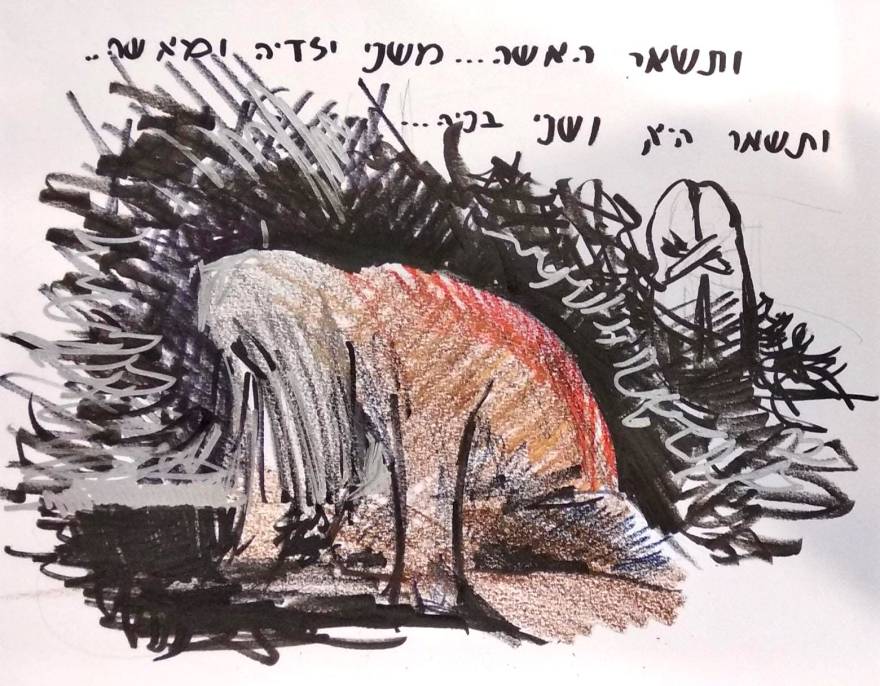During my MA studies in Jewish Education, at Hebrew University, we were working in groups on analyzing artistic portrayals of biblical stories. I decided to add my own take, and make some art, since I haven’t been actively doing that in a long time. I miss it.
So, here goes.
Naomi’s devastation upon the loss of her two sons, a decade after her husband died. And this time her loss is complete, since as long as her children were alive, there was hope of rebuilding the family.
וַיָּמָת אֱלִימֶלֶךְ אִישׁ נָעֳמִי וַתִּשָּׁאֵר הִיא וּשְׁנֵי בָנֶיהָ׃
Elimelech, Naomi’s husband, died; and she was left with her two sons. (Ruth 1:3)
וַיָּמוּתוּ גַם־שְׁנֵיהֶם מַחְלוֹן וְכִלְיוֹן וַתִּשָּׁאֵר הָאִשָּׁה מִשְּׁנֵי יְלָדֶיהָ – וּמֵאִישָׁהּ׃
Then those two—Mahlon and Chilion—also died; so the woman was left without her two children and without her husband. (Ruth 1:5)
Note two details.
- The two sons’ pronoun changes. At first they are banim, sons. Ben comes from the root binyan, which means “building”. But after they die, they change to yeladim, which merely refers to their having been born. They are children. But there is no potential for being built by them:אל תקרי בניך אלא בוניך
The Sages interpreted this verse homiletically: Do not read your children [banayikh], but your builders [bonayikh]. (Berakhot 64a)
- When they die, Naomi loses her husband again. She is truly bereft of him, because now she can no longer be built by her children.
Ruth and Orpah, the daughters in law, are embraced in the background. They are also bereaving, but their loss is not as utter and total as Naomi’s.

